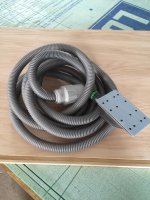- Joined
- Nov 14, 2013
- Messages
- 3,575
I'm referring to swirls and marks that typically only appear after you apply the first coat of finish, Dang it!
I have for years used the technique where you wet the wood with mineral spirits (paint thinner) as an aid to spotting flaws. I generally buy the cheapest thinner I can find when it's on sale, as I tend to go through it quickly on a big project.
I also know that you can look at the surface in low-angle, raking light. I don't find this method as useful as the 'thinner' one for most of my projects, but it does work better for solid surface materials and anywhere that the thinner won't wet the surface down.
Are there other ways to do this that might be faster and easier? I've done my share of unplanned refinishing and I'd like to learn more or better ways to avoid it?
I have for years used the technique where you wet the wood with mineral spirits (paint thinner) as an aid to spotting flaws. I generally buy the cheapest thinner I can find when it's on sale, as I tend to go through it quickly on a big project.
I also know that you can look at the surface in low-angle, raking light. I don't find this method as useful as the 'thinner' one for most of my projects, but it does work better for solid surface materials and anywhere that the thinner won't wet the surface down.
Are there other ways to do this that might be faster and easier? I've done my share of unplanned refinishing and I'd like to learn more or better ways to avoid it?


